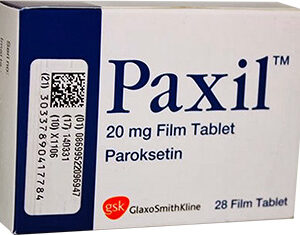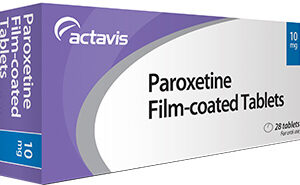Paroxetine Essentials
Paroxetine is a medication belonging to the selective serotonin reuptake inhibitor (SSRI) class of antidepressants. It is widely prescribed to treat a variety of psychological disorders, functioning mainly to balance the levels of serotonin in the brain, a neurotransmitter implicated in mood regulation.
Therapeutic Indications
Approved to address multiple mental health conditions, Paroxetine is utilized in treating major depressive disorder, obsessive-compulsive disorder, panic disorder with or without agoraphobia, generalized anxiety disorder, social anxiety disorder, and post-traumatic stress disorder. It also assists in managing the symptoms of premenstrual dysphoric disorder.
Administration Guidelines
When administering Paroxetine, it is critical to adhere to a clinician’s guidance. As a once-daily treatment, it is generally taken in the morning to reduce insomnia and can be consumed with or without food. Starting dosages are typically low to minimize side effects, with increments made gradually under medical supervision until the optimal therapeutic effect is achieved. An abrupt discontinuation is not advisable due to potential withdrawal symptoms.
Cautions and Restrictions
Paroxetine is contraindicated in individuals with known hypersensitivity to the drug or its components. Concurrent use with monoamine oxidase inhibitors (MAOIs) is prohibited due to the risk of serotonin syndrome, a potentially life-threatening condition. Caution is also advised in patients with a history of bipolar disorder, seizure disorders, and those at risk of bleeding events.
Drug Interactions
This medication should be administered with caution when combined with other pharmaceuticals. Drug interactions may occur with MAOIs, antipsychotics, aspirin, non-steroidal anti-inflammatory drugs (NSAIDs), warfarin, and other anticoagulants. Those taking triptans for migraines, lithium, or tryptophan supplements should also consult their healthcare provider due to the increased risk of serotonin syndrome.
Undesirable Effects
The use of Paroxetine may lead to a range of adverse reactions, including but not limited to nausea, somnolence, sweating, weakness, dizziness, and sexual dysfunction. It can also contribute to weight changes, appetite disturbances, and a small risk of increased suicidal thoughts in younger individuals.
Overdose Management
In the event of overdose, symptomatic and supportive treatment is important. Emergency medical attention should be sought immediately, and while there is no specific antidote for Paroxetine, measures such as gastric lavage, administration of activated charcoal, and careful monitoring of vital signs and cardiac rhythm are commonly employed in such scenarios.
Considerations for Special Groups
Special population considerations involve adjusting Paroxetine treatment for pregnant or breastfeeding individuals, highlighting potential risks to the fetus or nursing infant. Pediatric and geriatric populations may exhibit different responses to the drug, necessitating modified dosing and enhanced monitoring for side effects.
Pharmacological Profile
Paroxetine’s efficacy stems from inhibiting the reuptake of serotonin into the presynaptic cell, thereby increasing levels of serotonin available in the synaptic cleft. It displays a nonlinear pharmacokinetic profile whereby steady-state concentration can disproportionately increase with dose escalations.
Storing and Handling
Proper storage conditions for Paroxetine include a cool, dry place away from light and moisture. Medication should be kept securely out of the reach of children, and disposed of correctly once expired or no longer needed.
Guidance for Patients
Individuals prescribed Paroxetine should be counseled on the importance of adherence to their treatment regimen, the gradual nature of symptom improvement, and the necessity of not discontinuing the medication without consulting their healthcare provider. They should also be made aware of potential side effects and the need to report any substantial changes in mood, behavior, or thoughts.
Safety Information
Key safety information concerns include an increased risk of suicidal thoughts in young adults, the potential for withdrawal symptoms upon cessation, and the possible development of serotonin syndrome when taken with contraindicated drugs. Patients with a history of mania or seizures should utilize Paroxetine with caution.
Ongoing Supervision
Regular monitoring of individuals on Paroxetine is essential to gauge effectiveness and to modify dosage accordingly. Follow-up assessments often focus on psychological status, side effect profile, and adherence to medication, with any adjustments made on a patient-specific basis.






Reviews
There are no reviews yet.